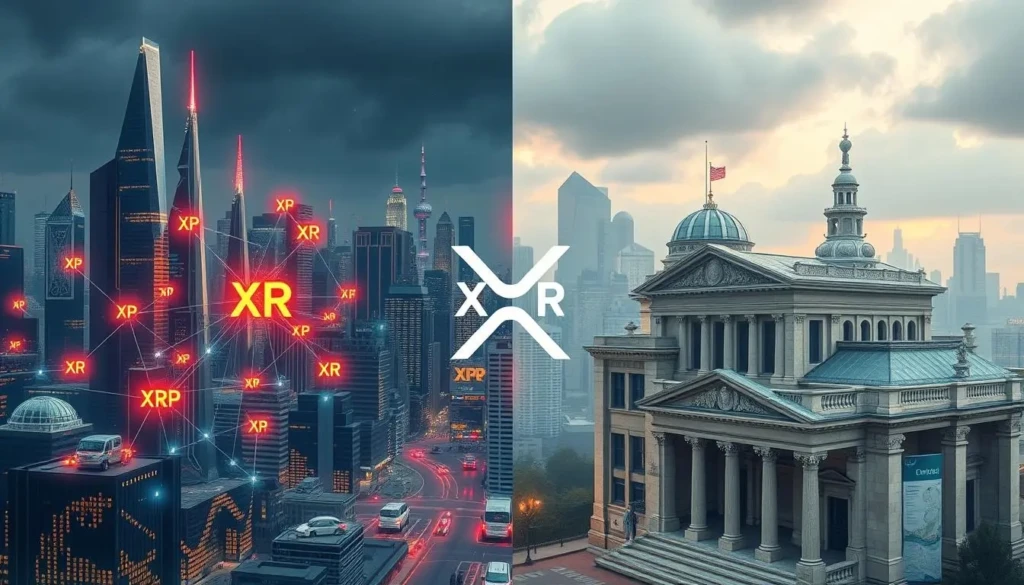Benefits of Using XRP: Transforming Global Payments
The benefits of using XRP are increasingly drawing attention from both financial institutions and retail users. In a world where sending money abroad often takes days and costs a hefty percentage of the transfer, XRP offers an alternative: near-instant settlement, ultra-low fees, and global liquidity. Designed by Ripple Labs, XRP positions itself not just as a cryptocurrency, but as the backbone of a new financial system capable of reshaping global payments.
Understanding XRP: The Bridge Currency of the Future
At its core, XRP was created to address inefficiencies in international banking. Unlike traditional payment rails, which rely on intermediaries such as SWIFT, XRP’s ledger allows transactions to clear in 3–5 seconds at a cost of less than a fraction of a penny. This speed and affordability give it the potential to serve as a true bridge currency—connecting banks, businesses, and individuals across borders without friction.
Ripple’s XRP Ledger (XRPL) is open-source, decentralized, and powered by a consensus protocol that avoids the energy-intensive mining of Bitcoin. This makes it both scalable and sustainable. With the capacity to process up to 1,500 transactions per second, XRP has become one of the fastest digital assets in the market.
Key Benefits of Using XRP
1. Speed and Efficiency
Traditional international transfers can take several days. In contrast, XRP settles in seconds, giving businesses and individuals real-time access to funds.
2. Cost Savings
Banks using RippleNet report saving up to 60% in transaction costs, largely by avoiding pre-funded accounts and high correspondent banking fees.
3. Scalability
With thousands of transactions per second, XRP supports both microtransactions and institutional-scale payments.
4. Sustainability
The XRP Ledger consumes far less energy compared to proof-of-work blockchains, making it a greener choice in an era where sustainability is a major concern.
5. Inflation Resistance
XRP’s capped supply provides protection against inflationary pressures, a problem that plagues traditional fiat currencies.
RippleNet: Infrastructure Behind the Movement
Ripple’s global network, RippleNet, is the infrastructure that allows XRP to operate at scale. By leveraging XRP as a liquidity bridge, RippleNet eliminates the need for banks to hold multiple foreign accounts worldwide. This innovation has already attracted major financial institutions such as Santander and SBI Holdings, showcasing how blockchain can streamline global finance.
Read more about RippleNet’s partnerships here.
XRP vs Traditional Payment Systems
| Feature | XRP | Traditional Payments |
|---|---|---|
| Settlement Time | 3–5 seconds | 2–5 business days |
| Transaction Fees | Fractions of a penny | 3–5% of transaction value |
| Liquidity | On-demand via RippleNet | Reliant on intermediaries |
| Transparency | Public blockchain ledger | Opaque banking networks |
The comparison highlights the benefits of using XRP for businesses, migrants sending remittances, and institutions seeking liquidity solutions.
Strategic Partnerships and Global Adoption
Ripple has established partnerships across multiple regions:
- India: Collaborations with Federal Bank and IndusInd Bank to streamline remittances.
- Saudi Arabia: Work with Al Rajhi Bank and the Saudi Arabian Monetary Authority modernizes financial infrastructure.
- Europe & Japan: Partnerships with Santander and SBI Holdings solidify Ripple’s presence in global financial hubs.
- Africa: Fintech firm Flutterwave leverages XRP Ledger to empower African SMEs in cross-border trade.
These partnerships demonstrate the growing confidence in XRP as a legitimate global payment solution.
Regulatory Landscape: Challenges and Opportunities
The regulatory journey of XRP has been turbulent. The SEC lawsuit in the United States questioned whether XRP was a security, creating uncertainty in its adoption. However, courts have since clarified that public sales of XRP do not qualify as securities, opening the door for broader institutional use.
Globally, regulators are increasingly recognizing the benefits of blockchain for financial innovation. Ripple’s active engagement with policymakers highlights its commitment to compliance and long-term adoption.
Environmental Impact of XRP
The environmental benefits of using XRP are notable. Unlike Bitcoin and Ethereum’s proof-of-work models, the XRP Ledger consumes just 0.0022 kWh per transaction, with over 28% sourced from renewables. This efficiency positions XRP as a “green crypto,” aligning with the sustainability goals of banks and governments worldwide.
Conclusion: The Future Outlook for XRP
The benefits of using XRP extend far beyond faster payments. With its low-cost, scalable, and eco-friendly infrastructure, XRP is redefining cross-border finance. Strategic partnerships, regulatory clarity, and growing institutional adoption suggest XRP could become a cornerstone of the next-generation financial system.
As the world transitions to a more connected digital economy, XRP’s role as a bridge currency makes it one of the most promising contenders for mainstream global finance.
FAQ: Benefits of Using XRP
What are the main benefits of using XRP in payments?
XRP offers near-instant settlement, ultra-low fees, and high scalability, making it ideal for cross-border payments.
How do the benefits of using XRP compare to Bitcoin and Ethereum?
Unlike Bitcoin or Ethereum, XRP does not rely on mining, making it faster, cheaper, and more eco-friendly.
Can the benefits of using XRP help businesses reduce costs?
Yes. RippleNet users save up to 60% on cross-border payment costs by avoiding traditional correspondent banking fees.
Is regulation affecting the benefits of using XRP?
While regulatory challenges have slowed adoption in some regions, recent legal clarity in the U.S. has strengthened XRP’s legitimacy.
Are the environmental benefits of using XRP significant?
Yes. XRP transactions consume far less energy than proof-of-work blockchains, making it a sustainable digital asset.

